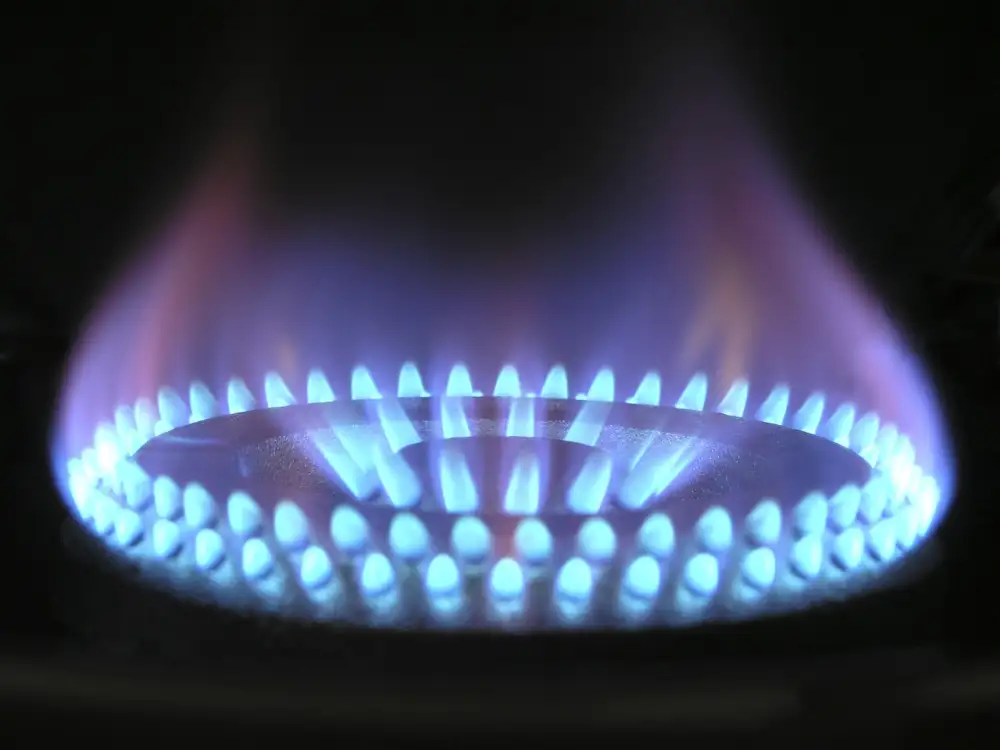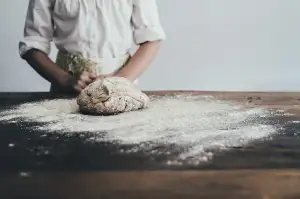Mastering the Art of Cooking with a Convection Oven: Your Ultimate Guide to Home Cooking Perfection

- Understanding the Basics of a Convection Oven
- Preheating the Convection Oven
- Adjusting Cooking Time and Temperature
- Proper Placement of Food in the Convection Oven
- Using the Convection Setting for Baking
- Using the Convection Setting for Roasting
- Using the Convection Setting for Broiling
- Cleaning and Maintenance of the Convection Oven
In the world of home cooking, convection ovens have become a game-changer. These innovative appliances offer a more efficient and effective way to cook, bake, roast, and broil your favorite dishes. Unlike traditional ovens that rely on radiant heat, convection ovens use a fan to circulate hot air evenly throughout the cooking chamber. This constant circulation of hot air ensures faster and more even cooking, resulting in perfectly cooked meals every time. Whether you're a seasoned chef or an amateur cook, mastering the art of cooking with a convection oven will elevate your culinary skills to new heights. Join us as we delve into the ins and outs of using a convection oven and discover how it can revolutionize your home cooking experience.
Understanding the Basics of a Convection Oven
A convection oven is a kitchen appliance that uses a fan and exhaust system to circulate hot air evenly around the food. This results in faster and more even cooking compared to conventional ovens. The fan helps to distribute heat evenly, reducing hot spots and ensuring that every part of the food is cooked to perfection.
The main difference between a convection oven and a conventional oven is the way they distribute heat. In a conventional oven, heat rises from the bottom and accumulates at the top, causing uneven cooking. However, in a convection oven, the fan circulates hot air throughout the oven cavity, ensuring that all sides of the food are exposed to heat simultaneously.
By understanding this basic principle, you can take advantage of the benefits offered by a convection oven. Whether you're baking cookies or roasting a chicken, using a convection oven can help you achieve better results in less time. So let's dive deeper into how to make the most out of your convection oven for perfect home cooking.
Preheating the Convection Oven
Before you start cooking with a convection oven, it is important to preheat it properly. Preheating ensures that the oven reaches the desired temperature for even and efficient cooking. To preheat your convection oven, simply set the temperature to the desired level and allow it to heat up for about 10-15 minutes.
Unlike traditional ovens, convection ovens have a fan that circulates hot air throughout the oven cavity. This fan helps distribute heat evenly, resulting in faster and more consistent cooking. By preheating the oven, you ensure that the entire cavity is heated to the desired temperature before placing your food inside.
During preheating, keep an eye on the oven's display or indicator light to know when it has reached the set temperature. Some convection ovens also have a beep or signal to indicate when preheating is complete. Once preheated, you can confidently place your food inside knowing that it will cook evenly and efficiently.
Remember, preheating is essential for achieving optimal results with a convection oven. So take a few extra minutes to let your oven reach the desired temperature before starting your culinary masterpiece.
Adjusting Cooking Time and Temperature
When using a convection oven, it is important to adjust the cooking time and temperature to achieve optimal results. The circulating hot air in a convection oven cooks food faster than a traditional oven, so you will need to reduce the cooking time by about 25%. For example, if a recipe calls for 30 minutes of baking time in a regular oven, you should only bake it for around 22-23 minutes in a convection oven.
In terms of temperature, you can also lower it by about 25 degrees Fahrenheit (or 15 degrees Celsius) compared to what the recipe suggests. This adjustment ensures that your food doesn't overcook or burn on the outside while remaining undercooked inside. However, keep in mind that every convection oven is different, so it's essential to monitor your food closely during the cooking process and make adjustments as necessary.
By mastering the art of adjusting cooking time and temperature in your convection oven, you can achieve perfectly cooked dishes every time. Experiment with different recipes and take note of any modifications needed for future reference. With practice, you'll become more comfortable and confident in utilizing this fantastic kitchen appliance to its full potential.
Proper Placement of Food in the Convection Oven
Proper placement of food in a convection oven is crucial to ensure even cooking and optimal results. When using a convection oven, it is important to leave enough space around the food for the hot air to circulate. This allows for better browning and crispiness.
For baking, place the food on a baking sheet or rack positioned in the center of the oven. Avoid overcrowding the tray as it can hinder proper airflow and result in unevenly cooked dishes.
When roasting, use a shallow roasting pan with low sides to allow hot air to circulate around the meat or vegetables. Place the food on a wire rack inside the pan to elevate it and promote even browning.
When broiling, position the food on a broiler pan or directly on the oven rack. This ensures that excess fat or juices can drip away from the food, preventing it from becoming soggy.
Remember to adjust cooking times accordingly when using a convection oven as it cooks faster than conventional ovens. Keep an eye on your food during cooking to prevent overcooking or burning.
By properly placing your food in a convection oven, you can achieve perfectly cooked dishes with enhanced flavors and textures.
Using the Convection Setting for Baking
When it comes to baking, a convection oven can be your secret weapon for achieving perfectly golden and evenly cooked treats. The convection setting in your oven utilizes a fan to circulate hot air, resulting in faster and more even baking.
To get started, preheat your convection oven to the recommended temperature for your recipe. The fan will help distribute the heat evenly throughout the oven cavity, ensuring that your baked goods are cooked thoroughly from all sides.
When using the convection setting for baking, you may need to adjust the cooking time slightly. Since the hot air is circulated more efficiently, food tends to cook faster than in a conventional oven. Start by reducing the baking time by about 25% and keep an eye on your treats as they bake. This will prevent them from overcooking or burning.
Proper placement of your baking pans is crucial when using a convection oven. Make sure there is enough space between each pan for proper air circulation. Avoid overcrowding the oven, as this can lead to uneven cooking.
The convection setting is ideal for baking cookies, pastries, cakes, and breads. It helps create a crispy exterior while maintaining a moist interior. However, delicate items such as soufflés or custards may not fare well with the intense heat generated by the fan. In such cases, it's best to use the conventional setting instead.
Remember to rotate your pans halfway through the baking process to ensure even browning. This will also help prevent any hot spots that may occur due to variations in airflow within the oven.
In conclusion, using the convection setting for baking can elevate your culinary creations to new heights. With its ability to provide consistent heat distribution and shorten cooking times, a convection oven is a valuable tool in any home kitchen. So go ahead and embrace this efficient method of baking – you'll be amazed at the professional-quality results you can achieve.
Using the Convection Setting for Roasting
Roasting is a popular cooking method that brings out the rich flavors of meats and vegetables. With a convection oven, you can achieve even better results. When roasting in a convection oven, the hot air circulates around the food, ensuring even cooking and a crispy exterior.
To roast with a convection oven, start by preheating it to the recommended temperature. Place your seasoned meat or vegetables on a roasting rack or directly on a baking sheet. The airflow in the convection oven helps to brown and caramelize the surface of the food while keeping it moist and tender inside.
Remember to adjust your cooking time when using the convection setting. As hot air circulates more efficiently, dishes tend to cook faster than in conventional ovens. Reduce your cooking time by about 25% and keep an eye on your food to prevent overcooking.
For best results, avoid overcrowding the oven. Leave enough space between each item for proper air circulation. This will ensure that everything cooks evenly and achieves that desirable golden-brown color.
Whether you're roasting a whole chicken, beef tenderloin, or root vegetables, using the convection setting in your oven will elevate your roasting game to new heights. The result will be perfectly cooked dishes with succulent interiors and beautifully caramelized exteriors.
Next time you're planning a roast dinner or preparing a Sunday brunch, embrace the efficiency of your convection oven and experience professional-level cooking right at home.
Using the Convection Setting for Broiling
Broiling is a cooking technique that involves exposing food to direct heat from above. When using a convection oven for broiling, it's important to follow a few key steps to achieve optimal results.
First, set your convection oven to the broil setting and allow it to preheat. This ensures that the oven reaches the necessary temperature for effective broiling.
Next, place your food on a broiler pan or a baking sheet with a wire rack. The elevated rack allows air to circulate around the food, promoting even cooking and browning.
Position the food on the top rack of the oven, as close to the heating element as possible without touching it. This ensures that your food gets evenly cooked and develops a delicious crispy exterior.
Keep an eye on your food while broiling, as it can quickly go from perfectly browned to burnt. Use a timer and periodically check on your dish to ensure it is cooking evenly and not overcooking.
Remember, when using the convection setting for broiling, you may need to adjust the cooking time slightly compared to traditional broiling methods. The circulating hot air in the convection oven speeds up cooking times, so keep an eye on your dish and make any necessary adjustments accordingly.
Once your food is perfectly browned and cooked through, remove it from the oven using heat-resistant gloves or tongs. Allow it to rest for a few minutes before serving to let the juices redistribute and flavors settle.
With proper understanding and practice, you can master the art of broiling with a convection oven. Enjoy perfectly browned meats, fish, vegetables, or even desserts with this efficient cooking method.
Cleaning and Maintenance of the Convection Oven
Cleaning and maintaining your convection oven is essential to ensure its longevity and efficiency. Here are some tips to keep your oven in top condition:
1. Regular cleaning: After each use, wipe down the interior of the oven with a damp cloth or sponge to remove any spills or food residue. Avoid using abrasive cleaners that can damage the oven's surface.
2. Deep cleaning: Every few months, give your convection oven a thorough clean. Remove the racks and soak them in warm soapy water. Use a non-abrasive cleaner to scrub away any stubborn stains inside the oven. Rinse thoroughly and dry before reassembling.
3. Cleaning the fan: The fan inside the convection oven can accumulate grease and dirt over time, affecting its performance. Carefully remove the fan cover and clean it with warm soapy water or a mild degreaser. Ensure it is completely dry before reattaching.
4. Door maintenance: Clean the door glass regularly using a glass cleaner to maintain visibility while cooking. Check for any loose seals or gaskets around the door and replace if necessary to prevent heat loss.
5. Oven exterior: Wipe down the exterior of the oven with a damp cloth to remove any fingerprints or smudges. Avoid using harsh chemicals that may damage the finish.
6. Ventilation system: Keep the ventilation system clear of debris by regularly removing any obstructions such as food particles or dust buildup.
By following these simple cleaning and maintenance practices, you can ensure that your convection oven remains in optimal condition, providing you with efficient cooking results for years to come
In conclusion, embracing the efficiency of a convection oven can revolutionize your home cooking experience. With its ability to circulate hot air evenly, a convection oven ensures faster and more even cooking results. By understanding the basics of preheating, adjusting cooking time and temperature, and proper food placement, you can achieve perfect dishes every time. Whether you're baking, roasting, or broiling, the convection setting will elevate your culinary creations to new heights. Don't forget to regularly clean and maintain your oven for optimal performance. So why wait? Upgrade to a convection oven today and unlock the true potential of your home cooking!
Published: 23. 01. 2024
Category: Home



